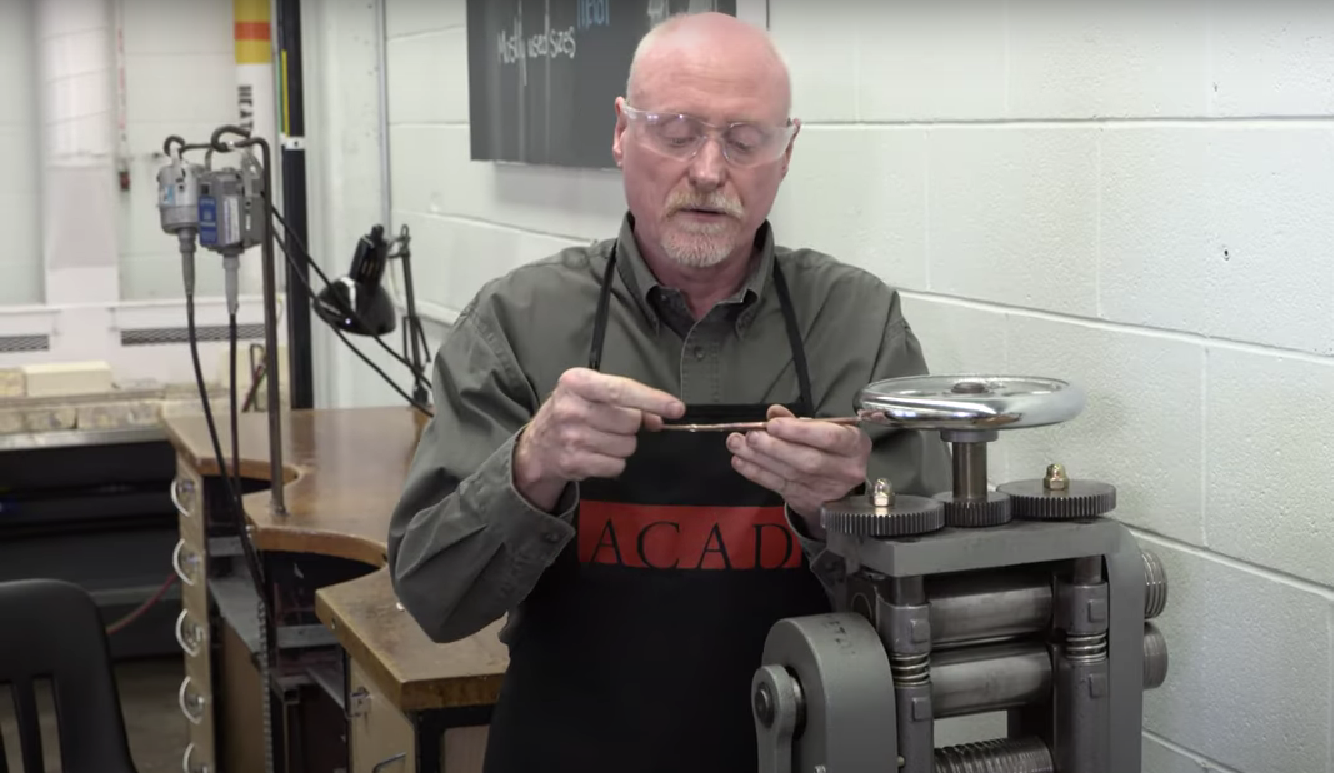How to Step-Roll Wire
One requires a taper on the end of the wire to grip it with when placed through a drawplate for drawing. One may obtain this taper in several ways.
2 Minute Read
This article, written by Charles Lewton-Brain, shows you the way how to step-roll wire.
Steps on how to step-roll wire:
- One requires a taper on the end of the wire to grip it with when placed through a drawplate for drawing. One may obtain this taper in several ways.
- If a notch is filed into the flat slanting slope of your bench pin then the wire and the end to be pointed may be held hard in the notch. The lower end of the notch should be as deep as the thickness of the wire. Then with a 15-20 cm long flat file one files across the surface of the wood and rotates the wire at the same time as filing. Do not lift the file from the wood on either stroke direction. The wood steadies the file as the wire end is turned under it. The groove automatically makes a taper on the end of the wire. Other options include using a belt sander, a sanding disc and so on.
- The end of the wire can be tapered and pointed by step drawing it. One uses the hand wire rolling mill for this. Set the wire mill rolls tightly together, but not so tight that turning them with the handle is affected.
- Take the end of the wire that needs pointing and place it into a wire mill hole that is barely too small for it. Roll the wire about 2cm into the mill.
- Reverse the direction of cranking and roll the wire back out.
- Turn the wire 90o, insert it into the same hole it was just rolled in and roll it in and out again the same distance. By doing this one flattens any flange or burr that might form from the wire mill. Any time one uses the wire mill the wire must go through every hole twice at 90° for the same reason.
- Place the wire end into the next smallest hole and crank it in, but only about 1.5 cm this time. The same procedure of reversing the rolling direction to back it out, turning it 90°, back in and then out is repeated with this hole, but always to 1.5cm.
- This is then repeated in ever smaller holes and in each hole the wire is inserted less far thus creating a series of 'steps' on the wire. The overall effect is to produce a tapered, work hardened wire point. The work hardness helps prevent the tapered point from breaking off while drawing it.
- This method of rapidly tapering rods is used to good effect as a production method of forging metal into tapers. For example one can step roll and taper a thick rod at each end to use it for a bracelet. One then uses a planishing hammer to smooth the surface and sands it before polishing it. The product is identical to one made by hammering the metal out into a taper by hand.
You assume all responsibility and risk for the use of the safety resources available on or through this web page. The International Gem Society LLC does not assume any liability for the materials, information and opinions provided on, or available through, this web page. No advice or information provided by this website shall create any warranty. Reliance on such advice, information or the content of this web page is solely at your own risk, including without limitation any safety guidelines, resources or precautions, or any other information related to safety that may be available on or through this web page. The International Gem Society LLC disclaims any liability for injury, death or damages resulting from the use thereof.
Charles Lewton-Brain
Master goldsmith Charles Lewton-Brain trained, studied and worked in Germany, Canada and the United States to learn the skills he uses. Charles Lewton-Brain is one of the original creators of Ganoksin.
The All-In-One Jewelry Making Solution At Your Fingertips
When you join the Ganoksin community, you get the tools you need to take your work to the next level.
Trusted Jewelry Making Information & Techniques
Sign up to receive the latest articles, techniques, and inspirations with our free newsletter.
